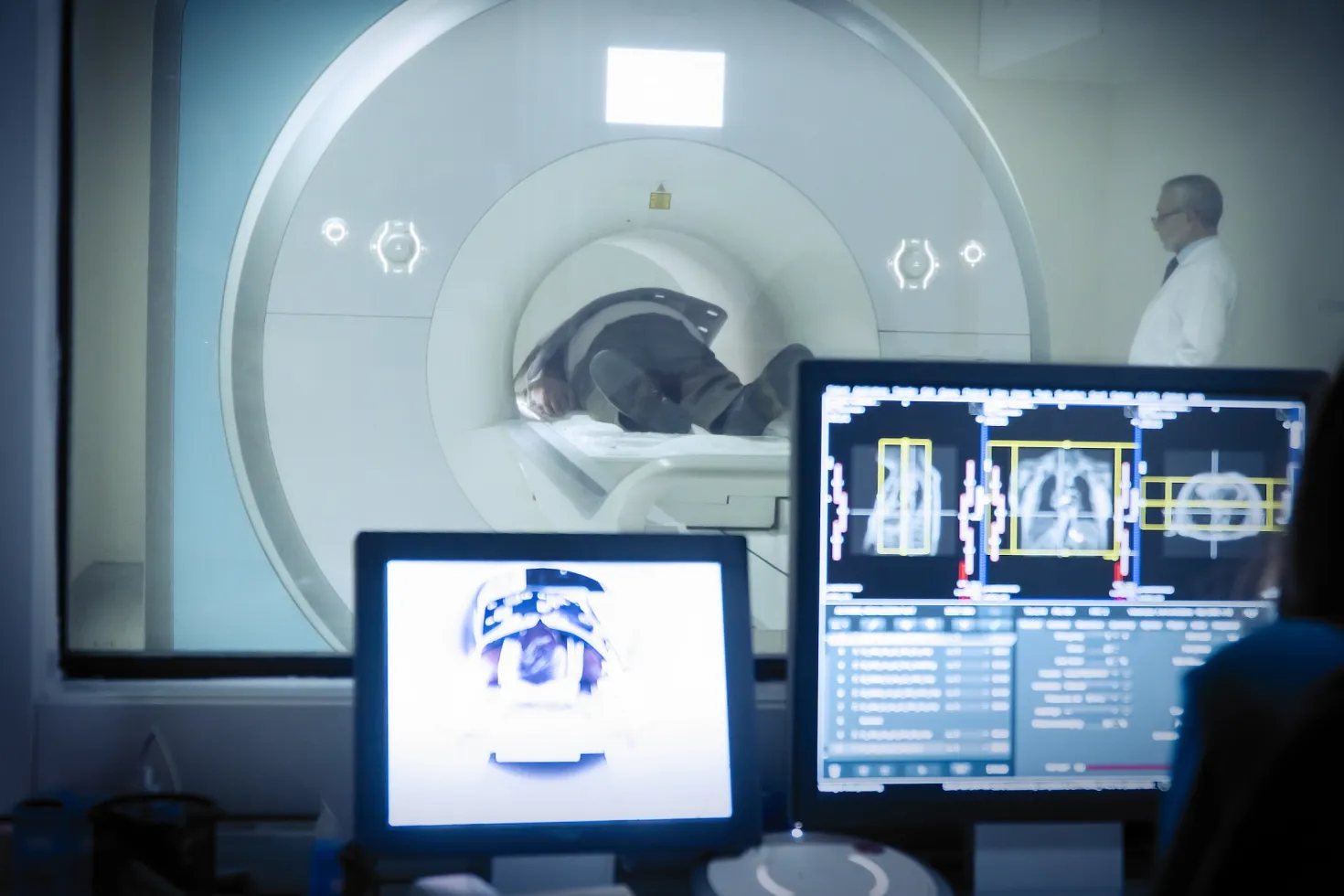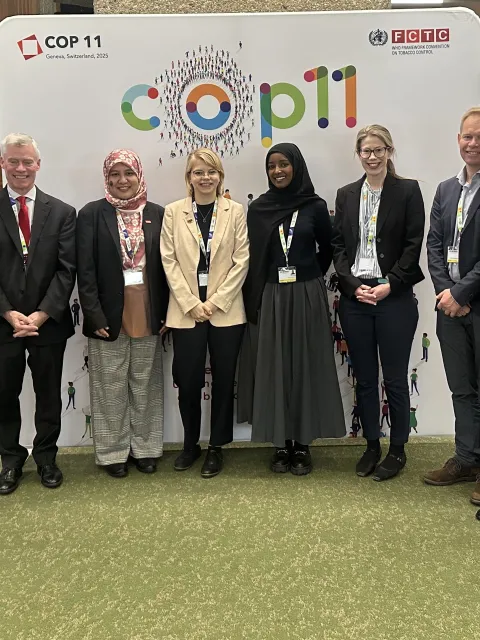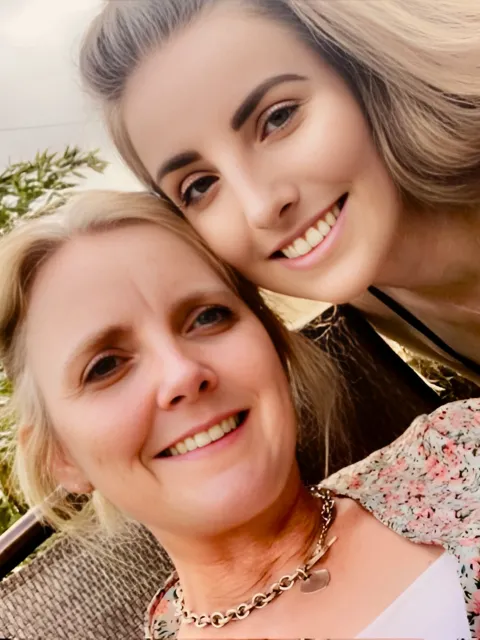Lung cancer risks, disparities, and response efforts
UICC and its members and partners draw attention to the key risk factors behind lung cancer – tobacco use and air pollution – and the urgent need to advance early detection, improve access to care, and reduce inequities.

The past decades have seen significant advances in cancer control, in particular in detecting cancers earlier with high performance screening machines such as magnetic resonance imaging; however, many of these technologies are not widely available in low-resource settings, as here at the Aga Khan Hospital in Kenya.
HIGHLIGHTS
- Lung cancer causes more deaths than any other cancer globally, with 71% of cases linked to tobacco use and 29% to air pollution.
- UICC member organisations, the Irish Cancer Society and Lung Connect India Foundation, along with Lung Cancer Collaboration (LCC) partner Boehringer Ingelheim, are supporting prevention, early detection, and improved care through national, community, and industry initiatives.
- Barriers such as stigma, late diagnosis, and unequal access remain, but mobile screening pilots and virtual patient support are closing some of the gaps.
- LCC, led by UICC, is driving a more integrated global response, including support for a WHA resolution on lung health.
Lung cancer is the most commonly diagnosed cancer and the leading cause of cancer death worldwide, with over 2.4 million new cases and nearly 1.8 million deaths in 2022.
As part of its working leading the Lung Cancer Collaboration (LCC), UICC is working with members and partners to develop a comprehensive and integrated approach to addressing lung cancer.
Notably, tobacco use and air pollution respectively contribute to an estimated 71% and 29% of lung cancer deaths worldwide, with significant overlap between these risk factors. Reducing exposure to them and improving access to early detection through screening could significantly improve outcomes.
Ahead of World No Tobacco Day on 31 May and World Environment Day on 5 June, UICC members the Irish Cancer Society and Lung Connect India Foundation, along with Boehringer Ingelheim, a UICC partner and part of the LCC, share their insights into tackling lung cancer. Their experiences highlight how different contexts shape both the burden of disease and the response.
From risk factors to awareness
In Ireland, lung cancer is the leading cause of cancer mortality, “claiming more lives than breast, prostate and bowel cancer combined,” said Amy Nolan, Director of Clinical Affairs at the Irish Cancer Society.
The government has already taken steps to restrict tobacco advertising and increase taxation, and has set an ambitious target to become tobacco-free by 2025. Challenges remain, however, particularly in combatting industry interference and the rising use of e-cigarettes and heated tobacco products – as is the case in many countries around the world, often highlighted by UICC.
These actions are supported by the Irish Cancer Society, which is advocating for stronger policy implementation and targeted support for disadvantaged populations. “We know that tobacco use is deeply intertwined with social and economic inequality,” said Nolan. “Our efforts focus on reducing smoking prevalence in high-risk groups and providing tailored cessation support post-diagnosis.”
“There is a lot of guilt and shame around lung cancer,” added Tanya Hills, Patient Engagement Lead, Oncology, at Boehringer Ingelheim. “Those who have smoked in the past or are current smokers tend not to seek treatment – they feel guilt and that they don’t deserve to come forward with symptoms. At the same time, non-smokers are often left out of awareness campaigns, so they may not realise they’re at risk either. This contributes to delays in diagnosis and reinforces gaps in awareness – particularly for women and underserved populations.”
In India, lung cancer is the second most common cancer among men and the fourth overall. Lung Connect India Foundation works to reduce use of tobacco through community outreach and education across all age groups and genders. “Although the government of India has invested a lot in raising awareness about the ill effects of tobacco, we need stronger involvement of the local communities and the society overall,” said Sanjeev Sharma, Director of Lung Connect India Foundation.
29% of adults (aged 15 and older) use tobacco in India, but tobacco is not the only concern in India. Air pollution, both outdoor and indoor, is a rising and often under-recognised contributor to lung cancer. India is home to many of the world’s most polluted cities, and in rural areas, women are disproportionately exposed to indoor air pollution from biomass cooking fuels. “We see a lot of patients who have never smoked,” said Sharma. “But they’ve lived their entire lives breathing polluted air.”
In Ireland, awareness of the link between air pollution and lung cancer is growing. Amy Nolan noted, however, that more public education is needed. “When people think of lung cancer, they think of smoking. But we need to broaden that understanding – air quality is a cancer issue too.”
The push for targeted lung cancer screening
When a cancer is detected early, treatment is most effective and the chances of survival are higher. But a significant obstacle to improving lung cancer outcomes is that the disease is often diagnosed late, largely because it causes few or no symptoms in its early stages.
International studies show that offering lung health checks to people at higher risk using low-dose CT scans can reduce deaths from lung cancer by more than 20% compared to chest X-rays, in some research reaching 24% in men and up to 33% in women.
In the US, for example, without screening, only about 16% of lung cancers are diagnosed at an early stage, and the overall five-year survival rate for lung cancer in the general population is approximately 18.6%. In contrast, people whose lung cancer is detected early through low-dose CT screening have shown a long-term survival rate of 81%.
In Ireland, approximately 60% of lung cancer cases are diagnosed at later stages, with one in four patients first diagnosed in an emergency setting, according to Amy Nolan. To address this, the Irish Cancer Society has launched the EUR 4.9 million ‘Lung Health Check Pilot Research Programme’
The Lung Health Check, supported by the EU4Health SOLACE consortium and the Department of Health’s Women’s Health Fund, is inviting high-risk individuals in selected GP practices, beginning with the Centric Health network in North Dublin and the North-East region to attend a lung health check at a mobile scanning unit. This service, operated by Alliance Medical Diagnostic Imaging, will be based in local GAA clubs, including Croke Park, bringing convenient screening to community locations for those invited.
The initiative targets high-risk groups for low-dose CT screening, notably current or former smokers aged 55 to 74, aiming to inform a national screening programme. “Lung cancer has become much more survivable when caught early,” said Nolan. “We now have better treatments, including precision therapies. But we need to find the disease before it spreads.”
The supports efforts such as the Irish pilot programme by promoting quality screening and reducing barriers to access across 17 countries, and reinforces the importance of integrating lung cancer screening into national cancer control plans.
Early detection of lung cancer in low-resource settings
“Too often, lung cancer is detected too late because health systems aren’t equipped to find it early,” said Tanya Hills. “We’re supporting efforts that build capacity at the primary care level.”
Amy Nolan notes that even in a high-income country such as Ireland, access to low-dose CT scans remains constrained. “The resources to perform the screening and the staff are just not there,” she said.
In India, lung cancer screening services are currently not in place. The Lung Connect India Foundation focuses on advocacy to raise awareness of the need for early detection and works to support policy shifts. This includes the classification of cancer as a notifiable disease, meaning health authorities would be systematically informed of each case — a move intended to improve data collection and resource allocation.
While the Foundation sees potential links with screening pathways for tuberculosis or chronic obstructive pulmonary disease, the high costs and lack of infrastructure and trained personnel currently make widespread screening infeasible.
As a grassroots response to this gap, the Foundation has organised more than 140 virtual support meetings since 2020 for patients, providing both authentic medical information and emotional support. “We try to bring knowledge and connection to people who would otherwise be isolated,” said Sharma.
These sessions are tailored to regional contexts — using local languages and involving doctors from the same areas — to overcome cultural and communication barriers. “Some women delay treatment because they feel they shouldn’t be the ones going to the doctor,” he added. “There’s discrimination, but also internalised stigma. We’re trying to change that.”
From detection to treatment and care
Advances in diagnostic technologies such as liquid biopsies as well as in treatment – particularly molecular targeted therapies and immunotherapies – have transformed outcomes for many lung cancer patients.
Targeted therapies for non-small cell lung cancer can delay the progression of the disease for many months longer than older treatments, often with fewer side effects and better quality of life. New immunotherapies are also helping some patients respond better to treatment, with tumours shrinking in around 4 out of 10 cases, – offering relief from symptoms, better quality of life, and in some cases, longer survival.
Boehringer Ingelheim is working with patient organisations and health systems to expand access to these therapies and the biomarker testing required to match patients with the most effective treatment.
“These therapies can be more effective and often have fewer side effects,” said Tanya Hills. “But it’s important that patients who could benefit are identified – and health systems need the capacity to offer that testing and treatment.”
To address gaps in care pathways in Ireland, the Irish Cancer Society has prioritised survivorship services, financial counselling, and a nurse navigator role.
India faces more fundamental barriers, including affordability, access to specialists, and availability of medicines, particularly in remote areas. The Lung Connect India Foundation began during the COVID-19 pandemic by helping patients in hard-to-reach areas access essential medicines. Over time, they evolved their model to include educational content and holistic support shared widely through YouTube and other platforms.
Lung Connect India Foundation now works closely with the government, hospitals, local clinicians, and pharma assistance programmes to ensure that patients are not left behind. “We’re trying to be a reliable bridge between patients and care,” said Sanjeev Sharma.
A call for integrated action
One of the goals of the LCC led by UICC is to improve access to diagnosis and treatment by supporting national strategies and health systems.
“Most countries have cancer strategies or oncology strategies, but to really meet patients’ needs, you need to start getting into the details and look at lung cancer-specific strategies or plans,” said Tanya Hills. “From early detection to survivorship – it needs its own focus.” Boehringer Ingelheim also reiterated the importance of working across sectors to close access gaps and ensure that innovation reaches patients, regardless of income or geography.
The LCC supported a resolution on integrated lung health, which was adopted at the 78th World Health Assembly. The resolution encourages countries to adopt joined-up, people-centred approaches to prevention, diagnosis, and care for respiratory conditions, including lung cancer.
With the LCC’s goal to double the five-year survival rate by 2030, continued progress will depend on strengthened screening and treatment infrastructure, improved public and policymaker awareness, and collaboration across sectors.

The Lung Cancer room is a dedicated space for the lung cancer community to stay connected, share knowledge, and exchange key insights from lung cancer experts.
Last update
Wednesday 28 May 2025
